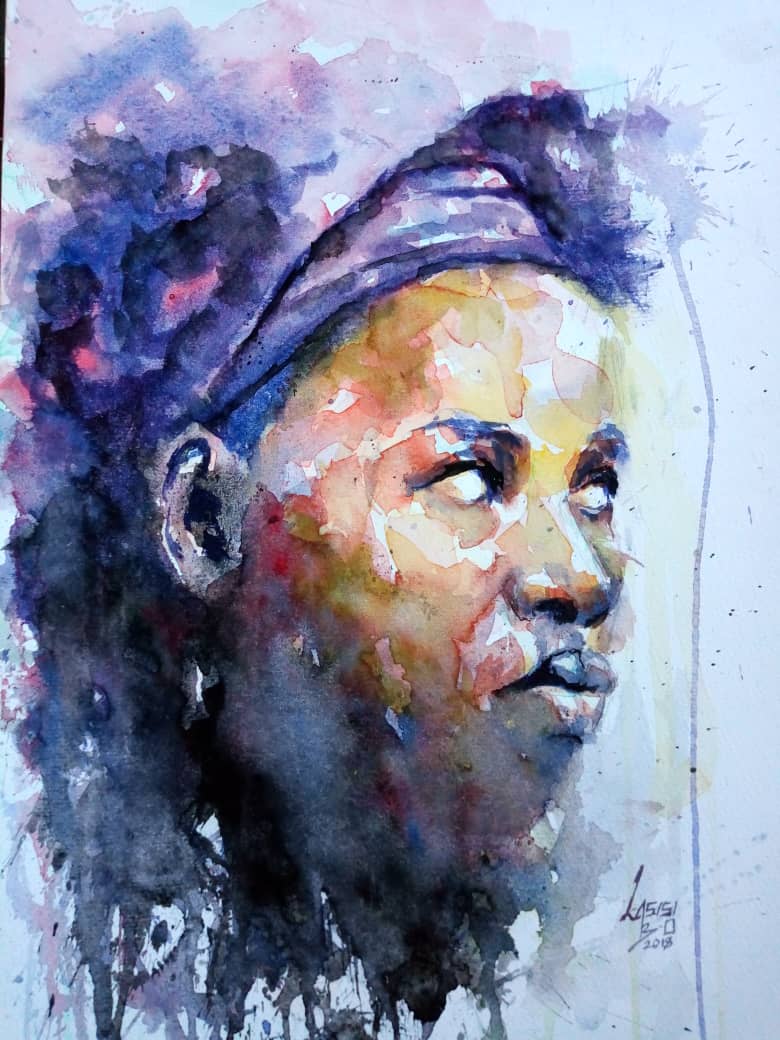Art: Woman-ity
When I paint a woman, it is easy to see how much the image of my mother influences my work. I grew up seeing her strive to keep the family happy and what she endured. In this article, I curate some of my paintings on the woman and offer some reflection on the African woman and society.
My art is usually figurative, focused on the human person, but I also try to blend in some level of abstractness. That way the figures that I paint tell a story, and one figure can tell multiple stories depending on who is looking at it. My aim is for my art to speak to the people who look at it; that they see parts of their realities or society in it.
Joys, struggles, and resilience
Ijo ayo (Yoruba: dance of joy) represents how the Nigerian woman celebrates. In my own Yoruba community, there is a party every weekend where there are lots of food, music, dancing and uniforms.
In this second group of paintings, I reflect on the preparation for womanhood using the West African wrapper. My aim here is to show how things are evolving. The wrapper used to be an initiation of sorts into womanhood but not so much these days. Important parts of society are changing—in how people dress, interact, get married.
The wrapper here also covers the figure as opposed to revealing all. Again, this shows the changes in society, such that culturally accepted norms on being fully covered with a garment like a wrapper are slowly being eradicated especially in urban centres. But this revealing of the self goes beyond the dress to what is shared about one's life, say, on social media. The line between what we keep to ourselves and what we reveal to the public is very blurred on Instagram and Facebook.
Although there has been a lot of advancements that afford women certain civil liberties even in very conservative societies, there are still more that can be done. There are judgements, condemnations, marginalisation of the woman which in turn provoke anger, fear, and resignation.
Here I depict her fears and vulnerability. That point you get to and you ask: what else can I do? I am lost.
In one of the paintings, I painted the woman's lips in red to depict the Nigerian maxim: "wetin eye don see, mouth no fit talk," to illustrate the internal struggles of the woman. There is also the recourse to supplication as shown in the penultimate image and the smile women have to put up in spite of challenges (last image).
Strength
Red also stands for courage. This painting shows the strength of many women. There are a lot of strong women out there who are actually making it and are truly smiling. I painted the figure looking back: "now I have something to say, I have something tangible to rejoice about".
In one popular Rihanna's song, she sang: “turn your face towards the sun, let the shadow fall behind you. Don’t look back. Just carry on and the shadow will never find you”. Inspired by that, I drew this image. At the end of the day, we all have to face the challenges of society. It is a picture of defiance, of moving towards achieving something. Don’t look back, look forward and everything will be over in no time. That's how I like to remember all the strong women in my life, especially my mother.
Tunde Lasisi Damilare is an artist based in Lagos, Nigeria. You can find his works on Instagram and Blogspot.







